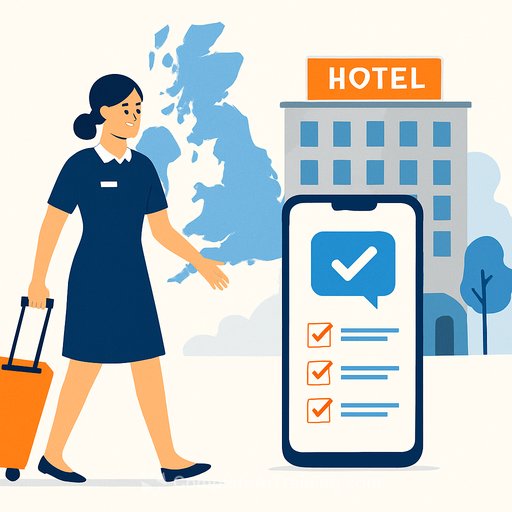Agentic AI in 5G Operations: From AIOps to Autonomous Action
Two dates to note. AI & Cloud Unwrapped: The 5G Evolution Webinar on October 22, 2025. Then, UNWRAPPED WEBINAR: AI: The Art of the Possible - The Path to Agentic AI in 5G Operations on 11 November 2025 at 17:00 GMT.
This session brings together Telia and BMC Helix to share how an award-winning TM Forum Catalyst moved from a proof to live production. The focus is simple: what it takes to run 5G at scale with agents that can observe, reason, and act across OSS, BSS, and IT without piling more toil on Ops.
Why automation alone is hitting a wall
As RAN and Core shift to cloud-native, data volume and event velocity outpace static runbooks. Traditional scripts and rule engines struggle with noisy alerts, partial context, and cross-domain dependencies.
Ops leaders need systems that don't just trigger workflows, but can prioritize, make trade-offs, and close the loop. That's where agentic AI steps in.
What agentic AI adds to AIOps
- Contextual reasoning: Agents correlate telemetry across OSS/BSS/IT to spot cause over symptom.
- Policy-aware actions: Decisions bounded by guardrails, SLOs, and change windows.
- Collaboration: Agents coordinate handoffs (e.g., capacity, assurance, care) instead of working in silos.
- Learning loops: Post-action feedback refines playbooks and reduces noise over time.
Telia x BMC Helix: from Catalyst to production
Expect concrete lessons from a program that started as a TM Forum Catalyst and now runs live. The message for Ops: you can translate innovation from lab to network-if you design for scale, guardrails, and measurable outcomes.
For background on industry standards that support this shift, see TM Forum's work on Open APIs and Catalyst programs (TM Forum Catalysts) and ETSI's vision for zero-touch operations (ETSI ZSM).
Data sovereignty and on-prem frameworks
Many CSPs prefer on-prem or edge-aligned agent frameworks for sensitive telemetry and network actions. This keeps PII and critical control loops inside sovereign boundaries while still using modern ML stacks.
Patterns that work: on-prem feature stores, policy engines as a shared service, and agents deployed close to where they act (Core, RAN, or edge sites). Cloud can still support model training, but execution stays local with clear data contracts.
Target: automate 80% of low-level tasks
Automating routine work frees experts to focus on resilience and experience. Here are practical, high-yield use cases for first-wave agents:
- Noise reduction and incident deduplication across OSS and ITSM.
- Root cause suggestions for RAN degradations using topology and KPIs.
- Auto-remediation for flaky network functions (restart, drain, reschedule).
- Ticket enrichment with context, probable cause, and next best action.
- Dynamic thresholding and anomaly detection for Core services.
- Self-tuning for CNF resource limits based on demand patterns.
- Proactive capacity flags tied to business events (promos, launches).
- Closed-loop QoS adjustments for enterprise slices with SLO guardrails.
- Customer-impact estimation to prioritize incidents and changes.
- Automated rollback/roll-forward decisions in blue-green upgrades.
Many lightweight agents or a few heavy hitters?
Both models work. The trade-off:
- Many small agents = speed and modularity, but watch for orchestration overhead.
- Fewer, capable agents = stronger cross-domain reasoning, but higher blast radius if misconfigured.
Whichever you choose, define a simple contract: inputs, policy constraints, allowed actions, and success metrics. Keep human-in-the-loop for any action that can affect safety, revenue, or compliance.
Avoiding lock-in as AI goes deeper into RAN and Core
- Adopt open data models and APIs (TMF Open APIs, 3GPP/ETSI artifacts) at integration points.
- Separate policy from agents so you can swap models without rewriting guardrails.
- Own your feature store and telemetry schema; vendors can plug in, not own it.
- Track model lineage and decisions in an audit trail to satisfy regulators.
Measure what matters
- Toil reduction: % of incidents auto-enriched, auto-resolved, or downgraded.
- MTTD/MTTR: improvements by domain and severity.
- Change success rate: fewer failed or rolled-back changes.
- Experience impact: QoE/SLA hits avoided, churn risk mitigated.
- Ops capacity: tickets per FTE, on-call pages per week.
A 90-day plan to move from talk to impact
- Weeks 1-2: Pick two use cases with clear KPIs and bounded actions. Define policies and fallbacks.
- Weeks 3-4: Stand up data contracts, topology sources, and a policy engine. Gate any risky actions with approval.
- Weeks 5-6: Train or tune models using last 6-12 months of incidents. Validate on a shadow lane.
- Weeks 7-8: Go limited live in one domain (e.g., Core CNFs). Measure results daily; adjust thresholds.
- Weeks 9-10: Expand actions from recommend to auto for low-risk fixes with rollback.
- Weeks 11-12: Publish outcomes, codify runbooks, and add the next two agents.
Governance without friction
- Define action classes: observe, recommend, auto with rollback, auto with approval.
- Set SLO-aligned guardrails per domain and business hour.
- Run a weekly safety review: drift checks, model health, and audit samples.
- Keep a clean off switch for any agent, with instant reversion to human control.
Why this webinar matters for Ops
You'll see what actually moved the needle for Telia and how BMC Helix fit into an operating model-not just a tool stack. Expect honest numbers on efficiency, service reliability, and resilience, plus the pitfalls they would avoid next time.
If you're planning skills uplift for your team while you pilot AIOps, you can browse automation-focused AI courses here: Complete AI Training - Automation.
Event details
- AI & Cloud Unwrapped: The 5G Evolution Webinar - October 22, 2025
- AI: The Art of the Possible - The Path to Agentic AI in 5G Operations - 11 November 2025, 17:00 GMT
- Featuring: Telia and BMC Helix
Bottom line: agentic AI isn't magic. It's a practical way to reduce toil, cut MTTR, and keep promises to customers-if you pair it with good data, clear guardrails, and a crisp rollout plan.
Your membership also unlocks:






